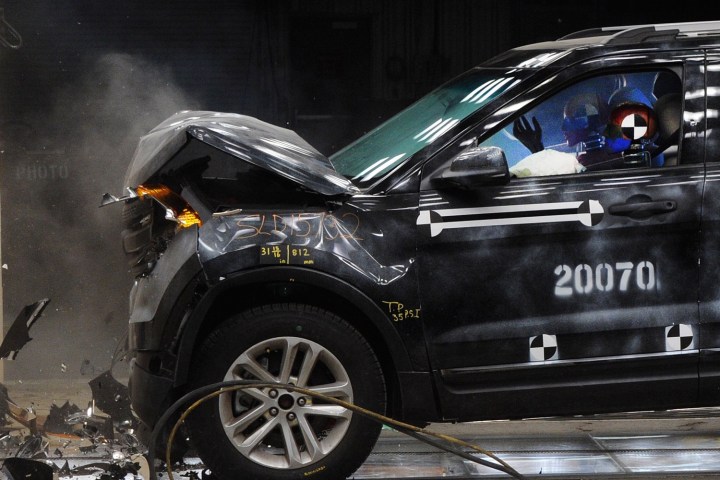
NHTSA plans to begin putting crash-test dummies in the back seats of test cars beginning in 2019. While that probably would have been a good idea any time over the past few decades, the agency is doing it in response to the rise of ride-sharing services like Uber and Lyft, according to Bloomberg. Analysts expect these services to continue to grow in popularity, putting more people in the back seats of vehicles.
While the popularity of ride-sharing services is a recent phenomenon, the safety of passengers in the back seat has long been an issue. Because the rear seats remain unoccupied during crash tests, safety enhancements have lagged behind advances made for passengers in the front seat. Improving rear-seat safety can also involve trade-offs with front-seat safety, NHTSA says.
Read more: Muscle cars do poorly in IIHS crash tests
Right now, carmakers primarily rely on seat belts and the rear-seat structure to protect occupants, but that assumes all passengers wear seat belts. “Partition face” is the nickname doctors around the country have given to head injuries sustained when a passenger in the rear seat of a vehicle hits the plexiglass barrier that separates the front and rear of taxi interiors, notes Bloomberg. New York City authorities estimate that about half of cab riders drive without seat belts.
One potential solution is adding safety equipment used for front-seat passengers to the back seat. Side airbags and inflatable seat belts are already available on some models, and rear seat belt pre-tensioners could be relatively straightforward to add, analysts say. Other changes might be a bit more difficult to implement.
The Center for Auto Safety identified 898 cases between 1990 and 2014 where children riding in rear seats behind occupied front seats were killed in rear-end collisions. In these types of crashes, the front seat often collapses, leading to a fatality. However, NHTSA says stiffer front seats, which could absorb more of the impact force of a rear passenger, could transmit too much force to front occupants, and cause whiplash-like injuries.


